#Ghanaian Heritage
Explore tagged Tumblr posts
Text
Zainab Takes New York: A Ghanaian Diaspora Tale – Book Review
Happy New Year and all that jazz. I’m pleased to report that I’ve completed my first book of 2025. It had been on my to be read pile on my Kindle for nearly 4 years to met embarrassment – and yes you’ve guessed it, this is my reading equivalent of going back to the gym – NOT ONLY WILL I READ MORE BUT I WILL ALSO DOCUMENT THIS READING. I guess this means I have at least one new year’s…
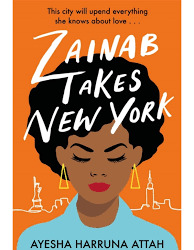
View On WordPress
#52 in 52#Ayesha Harruna Attah#black narratives matter#book review#book reviews#books#Books Set in New York African Literature#contemporary fiction#Cultural Exploration#Diaspora Fiction#Ghanaian authors#Ghanaian Heritage#Identity and Belonging#netgalley#popsugar#romance#Zainab Takes New York
0 notes
Text
NEW ALBUM STREAMING NOW!!!

FOREIGN is the latest album from Ghanaian alternative hip-hop/r&b artist Bloody Immigrants, released September 18, 2024.
Listen to the full album now:
youtube
#hip hop#rap#african hip hop#african music#african rap#alternative hip hop#underground hip hop#ghanaian music#rnb#r n b#r & b#heritage harmony records#Youtube
6 notes
·
View notes
Text
Diverse Stardew Valley 4.0 is officially here!
DSV 4.0 is a pretty different beast than 3.0+, and it’s bigger & better than ever 😆 The biggest difference is that we’re back on NexusMods and we’ve returned to an all-in-one download: the changes we made for 3.0 was the best move for the DSV team at the time, but things have changed in the last couple of years and we’ve updated accordingly.
DSV 4.0 also overhauls the interior of the mod with a shiny new C# engine, DSV Core, coded by the amazing KediDili. This should improve performance and make it much easier to configure DSV to your liking!
It’d take too long to list everything that 4.0 adds or changes, but here’s a quick summary:
Added over 250+ lines of variant-based dialogue
Added new additional variants which can be used alongside other variants:
Nonbinary Abigail, Sebastian, and Emily
Aro-Ace Gus
Jewish Mullners and Elliott
Hard-of-Hearing Haley
Added new small cultural map edits for modded variants
Re-added Marigold, Linus's service dog (this option requires Sprites in Detail, Custom NPC Exclusions, & Anti-Social NPCs) with improved higher-resolution sprites
Added new minor config options:
Mermaid Pendants - Rival Hearts & Canon Couples
Flower Queen's Crown Immersion Mode
Vanilla Beach Style
Enable Variant-Based Dialogue and individual dialogue toggles for each character
Abigail Goth Makeup
Elliott Helix Piercing & Ear Piercing
Penny & Pam Dynamic Outfits
Penny Freckles
Shane Punk Accessories
Marnie Dynamic Outfits
Clint Beard
Reworked character art for modded Pam, Black Haley & Emily, and modded Sikh and non-Sikh Harvey so that they have brighter, more accurate skintones
Clarified cultural backgrounds on the DSV website for several characters:
Romani Haley and Emily are of the Lovari vitsa
Black Haley and Emily have Ghanaian heritage
Indian Sandy is Deccani
Native Leah is of the Haida nation
Black Elliott has Jamaican heritage
Updated many outfits
Added compatibility with many mods
We also have a non-seasonal version for anyone who just wants the diversity edits (although it also contains some small tidbits for vanilla players such as improved beach art) and an add-on pack so that Always Raining in the Valley NPCs Sterling, Mia, and Henry can become Flower Queens through DSV’s Flower Queen’s Crown feature.
The DSV website has also been updated with visual guides to all of the new options, so please check it out! For any translators or mod authors interested in adding compatibility, there's also a new page with detailed instructions to help you out.
Thank you all for supporting DSV! 💖
415 notes
·
View notes
Text

From Chains to Crown: Uncovering Your Roots in Ghana with Best Ghana Tours
As a member of the African diaspora, have you ever wondered about your ancestral heritage? Do you feel a deep connection to the continent of Africa, but aren't sure where to start exploring your roots? Look no further than Ghana, a country steeped in rich history, vibrant culture, and breathtaking natural beauty. And, with Best Ghana Tours, you'll have a trusted guide to help you navigate this transformative journey.

Ghana, formerly known as the Gold Coast, was a major hub for the transatlantic slave trade. Millions of enslaved Africans were forcibly taken from their homeland, leaving behind a legacy of pain, trauma, and disconnection. However, Ghana has emerged as a symbol of resilience, hope, and reunification.

The Call to Come Home
In 2019, Ghana launched the "Year of Return" initiative, inviting members of the diaspora to come home and reconnect with their heritage. This call to action marked the 400th anniversary of the first enslaved Africans arriving in Jamestown, Virginia. Since then, thousands have answered the call, making the journey to Ghana to discover their roots. Best Ghana Tours has been at the forefront of this movement, curating unforgettable experiences for those seeking to reconnect with their ancestral homeland.

Uncover Your History with Best Ghana Tours
With Best Ghana Tours, you'll embark on a journey of self-discovery, exploring:
- Cape Coast Castle, a former slave fort turned museum
- The National Museum of Ghana, showcasing the country's rich history and culture
- The vibrant markets of Accra, where you can find traditional textiles, crafts, and cuisine

Reconnect with Your Heritage
Best Ghana Tours offers immersive cultural experiences, allowing you to:
- Attend a traditional naming ceremony
- Learn traditional drumming or dance
- Indulge in delicious Ghanaian cuisine

Join the Movement
The "From Chains to Crown" movement is about reclaiming your heritage, embracing your identity, and connecting with your ancestral homeland. Join the thousands who have already made the journey home with Best Ghana Tours and experience the transformative power of Ghana for yourself.

Come Home to Ghana with Best Ghana Tours
So why wait? Book your tour with Best Ghana Tours today and get ready to uncover your roots in Ghana. Let the warmth of the Ghanaian people, the vibrancy of the culture, and the beauty of the land envelop you. You are not just a visitor – you are coming home.
Contact Best Ghana Tours:
[email protected] +233 503314400
Share Your Story
Have you already made the journey to Ghana with Best Ghana Tours or are you planning to? Share your story with us! Let's continue the conversation on social media using the hashtag.
#FromChainsToCrown #GhanaTravel #GhanaTours #Adventure #Nature #GhanaCulture #Tradition #Tourism #WestAfrica #Travel #Nature #Wildlife #safari #tourpackages #allinclusivepackages #travelwithus #traveltoghana #dettydecember #all #europe #ghanatourism #tour #tourpackages #travelwithus #landsccape #paradise #nature #adventure #explore #travel #travelling #inspiration #motivation #flowers #flowercore #photography #aesthetic #cottagecore #naturecore #mountains #cottage garden #cottage witch #farmcore #curators on tumblr #photographers on tumblr #dark academia aesthetic #goblincore #design #fashion #scenery #alternative
#fall aesthetic #artwork #landscape
#bestghanatours#tourism#travel#ghana#tour package#accra ghana#tourist#travelwithus#worldwide privacy tour#summer#diaspora#beyondthereturn#new york#homecoming#united states#europe#africa#vacation#holiday#dettydecember#decemberinghana#heritage#culture#history
32 notes
·
View notes
Text
Should all African governments, chiefs, and kings request the return of their traditional artifacts and precious antiques to their respective countries? 👑 King Otumfuo Nana Osei Tutu II arrives in London to give a speech about Asante culture and heritage, highlighting the British Museum’s return of Ghanaian heritage.
23 notes
·
View notes
Text
No, Ncuti Gatwa's Casting Isn't Regressive
Chapter 3 - Dancing Queen/Conclusion
‘I’ve experienced racism my whole life, and while I always believed in myself, always knew [racists] were stupid and uneducated, I guess it did misinform my view of how the world works. It makes you think everyone has that opinion and you’ll constantly have to fight through life – then you learn that you don’t: you can find a tribe, you can find your people.’ - Ncuti Gatwa for Elle
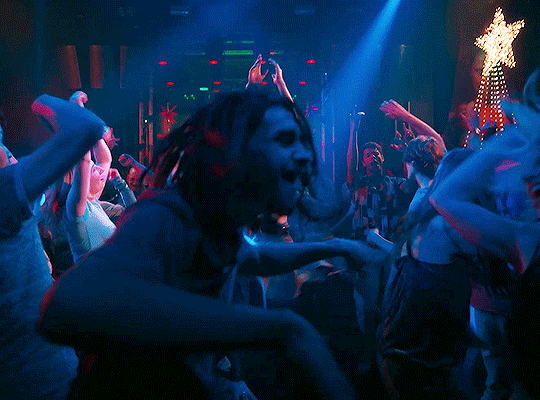
So with the treatment of Who’s Black men and the neglect of Black women in its representations of womanhood, consider the Fifteenth Doctor. A dark-skinned Black queer man, wearing a kilt and a bold smile, spinning to his heart’s content on the dancefloor. This is an image of Blackness, an image of queerness and an image of manhood and masculinity the show has never seen before. Gatwa is fully aware of this and has gone in depth in his interviews. He’s also addressed his Rwandan heritage and his family fleeing genocide against the Tutsi. Gatwa knows the feeling of being an outsider, heavily mirroring the revelation of the Timeless Child. Black Britishness is already a form of representation mainstream British media has only recently acknowledged and in this case, Black Scottishness is taking the forefront. Despite being a British cultural stape, Doctor Who’s been shy about representing Black Britishness specifically. We’ve had three Black companions, but little references to the culture (minus Ryan’s mention of grime music in Arachnids). We know Yaz is Pakistani. But is Ryan African? If yes, is he Nigerian, Ghanaian etc.? Is Ryan West Indian? If so, is he Trini, Bajan etc.? Is he both? What was Martha and Bill’s heritage? Many Black people in the British Isles are 2nd and 3rd gen immigrants, some of us are African, some are West Indian and some of us are both. Black British identity is complex as it is a melting pot of different African and West Indian cultures blended to create something new. Gatwa’s Black Scottishness provides this insight to Fifteen. Gatwa’s Rwandan heritage is included in Fifteen’s sonic too, with Gallifreyan symbols translating the phrase ‘the sharpness of the tongue always defeats the sharpness of the warrior’. Other Black cultural references have appeared for Fifteen too, with Gatwa noting his wardrobe is inspired by Black American HBCU fits. Even though it isn’t yet confirmed (and unlikely for series 14/season 1 seeing as there are no Black writers… yay!), Gatwa has shown interest in a Nigerian historical stating he’d love for the Doctor to meet the Orishas, goddesses of West African folklore. Again, with many different Black cultures not only is this an opportunity for representation but also new stories, new locations and new concepts the show has yet to discover. To fit in so many spaces but none at all is a perfect summary of the Black British experience and other Black experiences in Western countries.
“We choose our families. And the Doctor is a lonely wanderer, looking for their next adventure … I know many a gay man, MANY a gay man, I could describe that way!” - Ncuti Gatwa for the Guardian
Queer Black manhood and masculinity is rich and diverse and with this new era, we could see the tip of its iceberg. There have already been representations of this before in media such as Moonlight and Noah’s Arc so for a mainstream British show like Doctor Who to feature a queer Black man as the lead, we have the opportunity to show something special. With Nine and Jack’s kiss and Fourteen’s cosign of Isaac Newton already showing this potential, we could see a canon longer term mlm pairing involving the Doctor for the first time. And not only that but with a Black doctor for the first time. A queer Black man showing love and being loved is a reminder for queer Black people that universe-defying romance includes us too and that our DoctorRiver or TenRose moments can exist.
There is so much to look forward to in this new era and even more potential for the type of representation it can bring. So with that in mind, I hope the greater fandom at large can see this and that newer fans will get to experience that same joy we did when we first fell in love with this show.
‘This person survived a genocide. This person fits in everywhere and nowhere. I am the Doctor. The Doctor is me. I decided that I had to get this role’ - Ncuti Gatwa for Rolling Stone
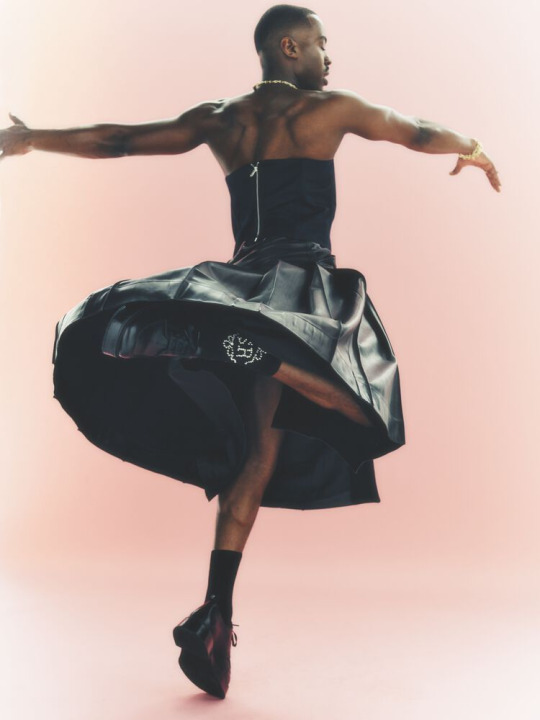
<- Chapter 2
#fifteenth doctor#15th doctor#ncuti gatwa#doctor who#nuwho#new who#black representation#doctor who analysis#fandom analysis#doctor who fandom#fandom antiblackness#fandom racism#fandom history
35 notes
·
View notes
Note
Hi cat do you please have any suggestions for face claims of cis female 25 and under now or then at the time who is of mixed heritage African American and white ty
Jordan Alexander (1993) African-American and White - is queer - has spoken up for Palestine!
Ashley Moore (1993) African-American, Cherokee, and White.
Jasmin Savoy Brown (1994) African-American / White - is queer - has spoken up for Palestine!
Khadijha Red Thunder (1994) Chippewa Cree, Black, White - is pansexual.
Corinne Foxx (1994) African-American / White.
Ryan Destiny (1995) African-American, ¼ Irish.
Sasha Lane (1995) African-American / Māori, White - is bisexual and has schizoaffective disorder.
Bree Kish (1996) ¼ African-American - has spoken up for Palestine!
Brittany O’Grady (1996) Louisiana Creole [African, French] / White.
Jaz Sinclair (1997) African-American / White.
Kiana Ledé (1997) African-American, Swedish, Mexican, and claims to be Cherokee but not sure if this is documented or verified - has spoken up for Palestine!
Madison Pettis (1998) African-American / White.
Rachel Crow (1998) African-American and White.
Marissa Bode (2000) African-American and White - is disabled - has spoken up for Palestine!
Daniella Perkins (2000) African-American / White.
Talia Jackson (2001) African-American / White.
and African-American but also:
Karla Crome (1988) Afro Jamaican / White.
Hayley Law (1992) Afro Jamaican / White.
Kiana Madeira (1992) Portuguese / Irish, Unspecified First Nations, Black Canadian.
Georgina Campbell (1992) Afro Jamaican / White.
Nesta Cooper (1993) Black Canadian and White.
Aisha Dee (1993) African Australian / White.
Lydia West (1993) Afro Montserratian / Irish.
Myha'la (1996) Afro Jamaican / White - is queer - has spoken up for Palestine!
Samantha Logan (1996) Afro-Trinidadian / White.
Ella Balinska (1996) Afro Jamaican / White.
Antonia Gentry (1997) Afro Jamaican / White.
Sisi Stringer (1997) African Australian and White - has spoken up for Palestine!
Alisha Boe (1997) Somali / White - has spoken up for Palestine!
Erin Kellyman (1998) Afro Jamaican / White - is a lesbian.
Sophie Wilde (1998) Ivorian / White.
Kayla Maisonet (1999) Afro Puerto Rican / Ashkenazi Jewish.
India Amarteifio (2001) Ghanaian / White - has spoken up for Palestine!
Hope this helps!
5 notes
·
View notes
Text
Embark on a Journey to Discover Ghana: A Guide for the Diaspora
Ghana, known as the "Gateway to Africa," is a country rich in culture, history, and natural beauty. For many in the diaspora, visiting Ghana is more than just a vacation—it's a pilgrimage to reconnect with their roots and heritage. Whether you're exploring the bustling streets of Accra, delving into the poignant history of the Cape Coast, or immersing yourself in the vibrant festivals, Ghana offers an unparalleled experience. This guide aims to provide comprehensive insights and tips for those in the diaspora planning to embark on a journey to discover Ghana.
(A) Why Ghana?
1. Historical Significance
Ghana is steeped in history, particularly the history of the transatlantic slave trade. The Cape Coast and Elmina Castles are somber reminders of this dark past, serving as significant historical sites where many African Americans find a deep connection to their ancestry.
2. Cultural Heritage
Ghana's diverse ethnic groups, including the Ashanti, Ewe, Ga, and Fante, each have unique traditions, languages, and cultural practices. Festivals like Homowo, Aboakyir, and Hogbetsotso offer a window into these rich cultural traditions.
3. Welcoming Atmosphere
Ghana is known for its hospitality. The country's slogan, "Akwaaba," meaning "welcome," is not just a word but a way of life. The warmth and friendliness of the Ghanaian people make visitors feel at home instantly.
(B) Planning Your Trip
1. When to Visit
Though you can travel to Ghana all year round, but the best time to visit is during the dry seasons, from November to March and July to August. These periods offer the most favorable weather for travel and outdoor activities and depends on the part of the country you want to explore.
2. Travel Requirements
Ensure your passport is valid for at least six months beyond your intended stay. Most travelers will need a visa to enter Ghana, which can be obtained from Ghanaian embassies or consulates. Additionally, a yellow fever vaccination is required for entry.
3. Budgeting
Ghana is relatively affordable, but costs can vary. Plan your budget around accommodation, food, transportation, and activities. For a mid-range traveler, a daily budget of $50-$150 is reasonable.
(C) Must-Visit Destinations
1. Accra
Accra, the capital city, is the perfect starting point for your Ghanaian adventure. Visit landmarks like Independence Square, Kwame Nkrumah Mausoleum, and the bustling Makola Market. The city's vibrant nightlife, with hotspots like Osu and Labadi Beach, offers a mix of modernity and tradition.
2. Cape Coast and Elmina
These coastal towns are home to the infamous Cape Coast Castle and Elmina Castle, key sites in the history of the transatlantic slave trade. Guided tours provide in-depth historical insights and are deeply moving experiences for many in the diaspora.
3. Kumasi
Kumasi, the heart of the Ashanti region, is known for its rich culture and history. Visit the Manhyia Palace, the seat of the Ashanti Kingdom, and the bustling Kejetia Market. The Ashanti people’s traditional crafts, like Kente cloth weaving and wood carving, are also must-see attractions.
4. Volta Region
The Volta Region boasts lush landscapes and scenic beauty. Explore Wli Waterfalls, the highest in West Africa, and Mount Afadja, Ghana's highest peak. The region is also known for its vibrant Ewe culture and traditions.
5. Northern Ghana
The north offers a different cultural experience. Visit Mole National Park, Ghana's largest wildlife reserve, and the ancient mud-and-stick mosque in Larabanga. The cultural festivals and traditional dances in Tamale and Bolgatanga are also highlights.
(D) Cultural Etiquette
Understanding and respecting local customs and etiquette is crucial. Here are some tips:
- Greetings: Greet people with a smile and a handshake. Elders should be greeted first.
- Dress Code: Dress modestly, especially in rural areas and during visits to religious sites.
- Photography: Always ask for permission before taking photos of people.
- Language: While English is the official language, learning a few words in local languages like Dagbani, Gonja, Twi, Ewe, or Ga can go a long way in building rapport.
(E) Immersive Experiences
1. Participate in Festivals
Ghanaian festivals are vibrant, colorful, and full of life. Participating in these festivals offers an immersive cultural experience. Key festivals include:
- Homowo: Celebrated by the Ga people, it marks the end of the hunger period with feasting and dancing.
- Aboakyir: A deer-hunting festival by the Effutu people in Winneba.
- Hogbetsotso: Celebrated by the Anlo Ewe in the Volta Region, it commemorates their migration from Notsie in Togo.
(F) Learn Traditional Crafts
Engage in workshops to learn traditional crafts like Kente weaving, bead making, and pottery. These activities provide hands-on experiences and deeper appreciation for Ghanaian culture.
(G) Explore Local Cuisine
Ghanaian cuisine is diverse and flavorful. Must-try dishes include:
- Jollof Rice: A popular West African dish made with rice, tomatoes, and spices.
-Banku and Tilapia: Fermented corn and cassava dough served with grilled tilapia.
- Fufu and Light Soup: A staple dish made from pounded cassava or yams, served with a variety of soups.
(H) Connecting with the Community
1. Volunteering Opportunities
Many organizations in Ghana offer volunteering opportunities, ranging from education and healthcare to community development. Volunteering not only gives back to the community but also provides a unique way to connect with locals.
2. Ancestry and Heritage Tours
Several organizations offer specialized tours that focus on ancestry and heritage. These tours often include visits to historical sites, cultural exchanges, and opportunities to trace family roots.
(I) Practical Tips
1. Health and Safety
- Vaccinations: Ensure you're up-to-date on necessary vaccinations, including yellow fever, hepatitis A and B, typhoid, and malaria prophylaxis.
- Water: Drink bottled or filtered water to avoid waterborne diseases.
- Safety: While Ghana is generally safe, stay vigilant in crowded places and avoid traveling alone at night.
(J) Currency and Payments
The local currency is the Ghanaian Cedi (GHS). Credit and debit cards are accepted in major cities, but it's advisable to carry cash, especially in rural areas.
(K) Transportation
Transportation options in Ghana include taxis, tro-tros (shared minibuses), and buses. For long-distance travel, domestic flights are available. Ride-hailing apps like Uber and Bolt operate in Accra and other major cities.
Embarking on a journey to discover Ghana is a profound experience for many in the diaspora. From its rich history and vibrant culture to its welcoming people and breathtaking landscapes, Ghana offers a unique and transformative travel experience. By planning ahead, respecting local customs, and immersing yourself in the culture, you can create lasting memories and deepen your connection to this beautiful country. Whether it's your first visit or a return trip, Ghana's doors are always open, ready to welcome you with open arms. Akwaaba!
#africa#travel#larabanga#molenationalpark#ourjourneydoesnotendhere#ghana#africadairies#bestghanatours#wildlife#travelphotography#diaspora#history#cultural#heritage#explore#adventure#nature#wildlifephotography#new york city#city tour#tourpackage#allinclusivetourpackage#budget#luxury
5 notes
·
View notes
Photo
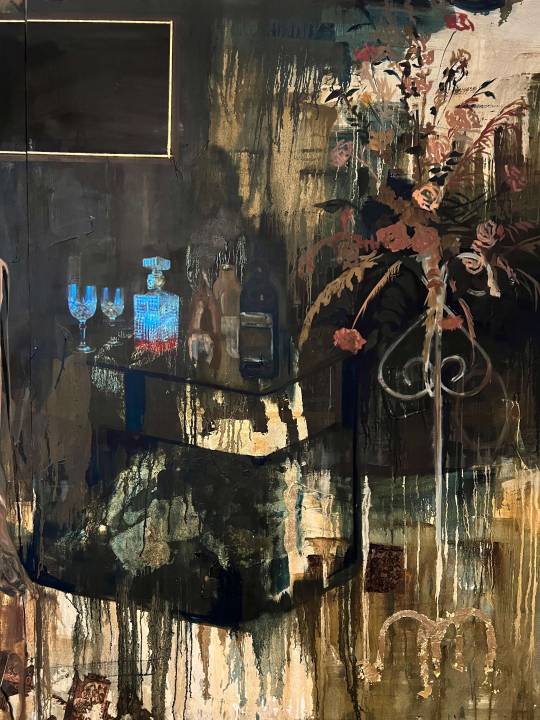
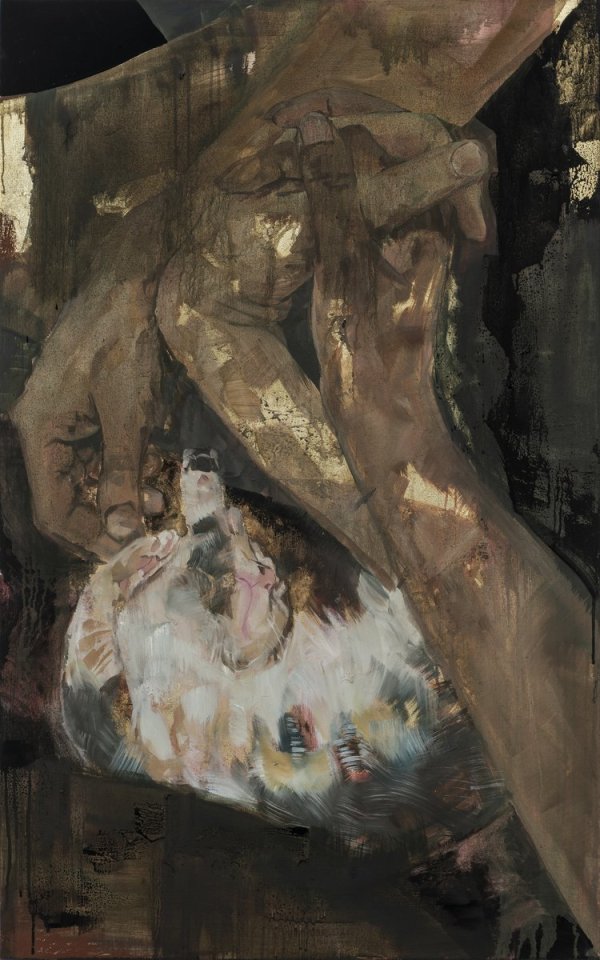


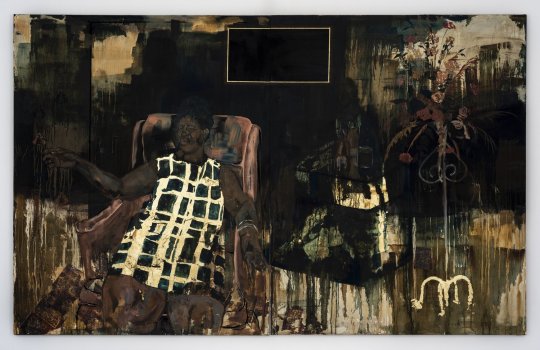

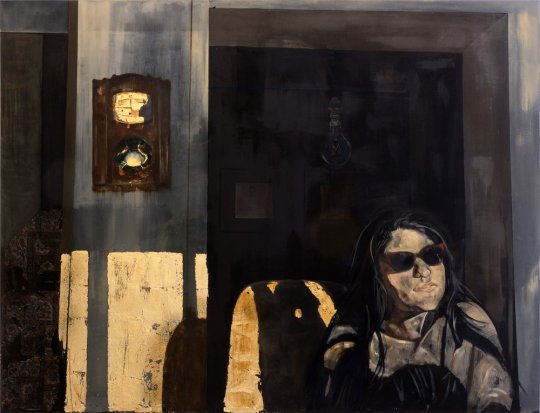
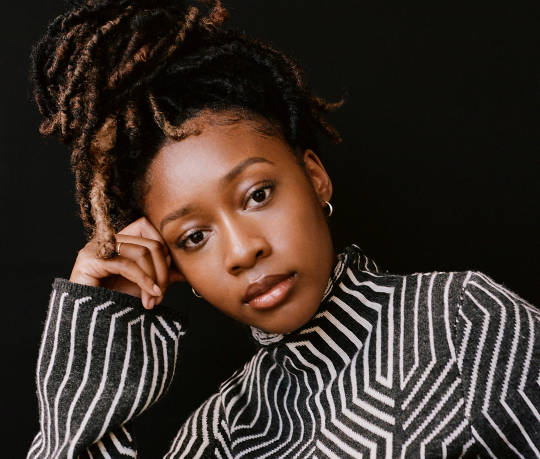
Emma Prempeh b. 1996 is a British artist with Ghanaian and Vincentian heritage based in London.
The tonal properties of her paintings enjoy warm, darkened earthly tones with a strong presence of blackness to invoke and project memories of events, people, and places that emphasise her appreciation of ancestral time and relationships, selfhood and transformation. Prempeh occasionally experiments with projected still and moving imagery to create painting installations that invite other experiential and performative encounters with her work. Embedded within her canvasses are hints of schlag metal, a brass alloy of copper and zinc imitative of gold leaf, representative of the exploration into the transitional journey between life and death. Over time, the material deteriorates, suggestive of the ineluctable passing of time.
Prempeh Studied at Goldsmiths University of London graduating in 2019 winning the Alumno/Space bursary award for 2020. She won 1st place for the Ingram Collection Purchase Prize and became a participating artist in Bloomberg New contemporaries 2019. Prempeh recently attended MA Painting at the Royal College of Art under the LeverHulme Trust Arts Scholarship winning the Valerie Beston Trust Arts award for 2022.
https://emmaprempeh.com/
40 notes
·
View notes
Text
[Album] Kid Anansi - "Kid Anansi" | @KidAnansi
Kid Anansi releases self-titled debut album on Aquamarine Records Kid Anansi, with his debut album released on September 23rd under Aquamarine Records, isn’t just entering the music scene; he’s redefining it. Drawing from his rich British-Ghanaian heritage and inspired by the trickster god Anansi, his album combines personal growth, cultural commentary, and unbridled whimsy. His journey into…
3 notes
·
View notes
Text

Lynette Yiadom-Boakye, Any Number of Preoccupations, 2010. Oil on canvas – 164 × 204 cm. Courtesy Serpentine Galleries.
Lynette Yiadom-Boakye is a British painter and writer, of Ghanaian heritage. She is best known for her portraits of imaginary subjects, or ones derived from found objects, which are painted in muted colours. Her work has contributed to the renaissance in painting the Black figure. Wikipedia
4 notes
·
View notes
Photo
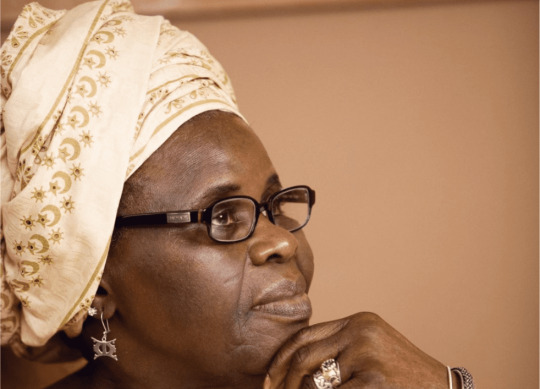
Ama Ata Aidoo, who has died aged 81, was one of Africa’s most influential writers. Her plays, short stories, novels and essays explored the experiences of women in contemporary Africa, both rural and urban – women who are remarkable for their spirit, humour and resilience.
Aidoo’s play The Dilemma of a Ghost, first staged in 1964 at the Ghana Drama Studio when she was 22, was issued by Longman in 1965, making her the first published female African dramatist. This play contrasts a young African- American wife’s idealised concept of “Mother Africa” with the reality of her Ghanaian husband’s African mother’s traditions and expectations, often conflicting with the values embraced by a younger western-educated generation.
Like her second play, Anowa (1969), The Dilemma of a Ghost draws on both African and western performance traditions. In these plays and many of her short stories, Aidoo created an Africanised form of English for her characters, drawing on her native Akan idioms and sentence structures.
While her first play examines cultural conflicts in contemporary Ghana, during the optimism created by Kwame Nkrumah’s success in achieving independence, Anowa, written after the 1966 military coup that deposed Nkrumah amid accusations of corruption, reflects on Ghanaian history and the complicity of African chiefs with slavery. In the face of political dereliction, the play calls for a shift away from materialism and self-interest.
However, it is Aidoo’s fiction that has reached a worldwide audience. Her first volume of short stories, No Sweetness Here, was published in 1971. Many of the stories were written to be read on radio, with listeners as well as readers in mind, combining traditional oral storytelling, and communal participation, with European reader-oriented narrative techniques. They also showed how western technology can be put to the service of African culture rather than replacing or subduing it.
The use of oral traditions also allowed Aidoo to give a voice to women, in a context where female writers have been marginalised, while the concentration on dialogue, rather than exterior description, places the emphasis on women’s subjectivities, emotions and thoughts, rather than their appearance.
The title of Aidoo’s first novel, Our Sister Killjoy: Or Reflections from a Black-eyed Squint (1977), conveys the narrator’s wry self-deprecating humour, together with her awareness of differences in perception. Recounting the experience of a young Ghanaian woman who spends several months in Germany – “the heart of whiteness” – and with two male characters both called Adolf, the novel is in part a reversal of Joseph Conrad’s Heart of Darkness.
Indeed there is a literal heart of darkness in the novel when a group of Africans debate the ethics of Christiaan Barnard’s transplant of the heart of an African man. Aidoo uses a variety of narrative techniques in the novel, contrasting “knowledge gained then” and “knowledge gained since”, interspersing prose with fragments of verse, while questioning the usefulness of the English language to express African experience:
A common heritage. A Dubious bargain that left us Plundered of Our gold Our tongue Our life – while our Dead fingers clutch English …
Together with Aidoo’s second novel, Changes: A Love Story, which won the Commonwealth Writers’ prize in 1992, Our Sister Killjoy appears frequently in university courses on postcolonial and women’s writing. Aidoo’s 1985 collection of poetry, Someone Talking to Sometime, was awarded the Nelson Mandela prize for poetry. A second volume of poetry, An Angry Letter in January, appeared in 1992. She also published two more volumes of short stories, The Girl Who Can and Other Stories (1997) and Diplomatic Pounds and Other Stories (2012), as well as books for children.
Christine Ama Ata Aidoo was born, with a twin brother, Kwame Ata, at Abeadzi Kyiakor, near Saltpond in central Ghana (at that time known as the Gold Coast), the daughter of Maame Abasema and Nana Yaw Fama. Her father was chief of Abeadzi Kyiakor, and she belonged to Fante royalty. He founded the first school in Saltpond, and ensured that both his children received a good education there. Aidoo later spoke of the importance of the village storyteller, around whom the villagers would gather in the evenings.
From 1957, the year that Ghana became the first independent African nation, she attended Wesley girls’ senior high school in the city of Cape Coast. There she became aware of Ghana’s connection with the history of slave trading, embodied in the Cape Coast “castle” where captured slaves were held before being shipped to Europe and the Americas.
In 1961 she enrolled at the University of Ghana to study English, and also began writing seriously. The following year she was selected by a panel including Chinua Achebe, Langston Hughes, and Wole Soyinka to attend a writing workshop in Ibadan, Nigeria. She forced her way into the Nigerian Broadcasting office in order to meet Achebe, who was then head of external broadcasting, breathlessly announcing to him that she had “indeed arrived at the shrine”.
After graduation, Aidoo taught at universities in Africa and the US. She was appointed Ghanaian minister for education in 1982 after Jerry Rawlings gained power in a military coup, but in 1983 resigned and moved to Zimbabwe, where she worked for the Zimbabwe Ministry for Education. When she returned to Ghana in 1999, she and her daughter Kinna Likamanni established the Mbaasem Foundation, which sought “to support the development and sustainability of African women writers and their artistic output”.
Throughout her life, Aidoo saw her writing and other activities as part of her endeavour to help Africans recover from the consequences of colonialism.
In an interview in 1987 she declared: “I wish of course that Africa would be free and strong and organised and constructive, etc ... That is basic to my commitment as a writer … I keep seeing different dimensions of it, different interpretations coming through my writing.”
She is survived by her daughter.
🔔 Ama Ata Aidoo, writer and educator, born 23 March 1942; died 31 May 2023
Daily inspiration. Discover more photos at http://justforbooks.tumblr.com
21 notes
·
View notes
Text
The astrology of Manon Bannerman

Background: Manon (마농) is a Swiss-Ghanaian trainee. She is best known for participating in the survival show The Debut: Dream Academy.
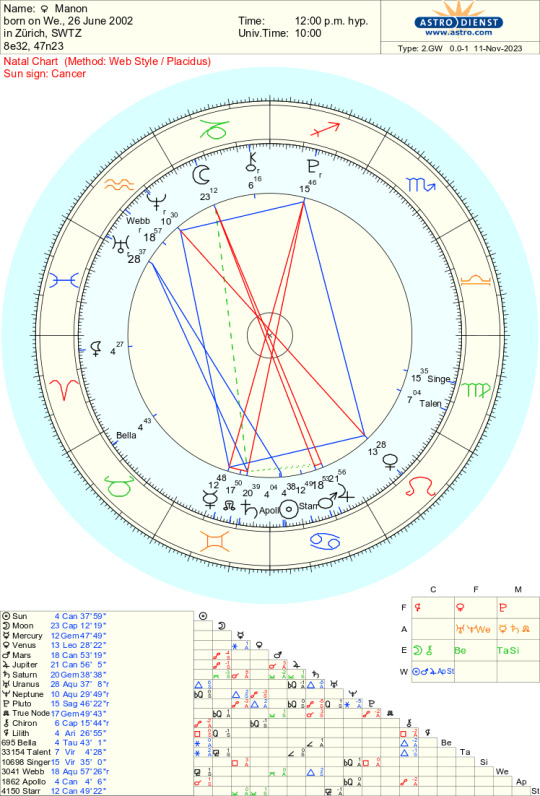
The cancer stellium omgg. She's really sweet and kind. It explains why I really liked her energy in the other reading. Though she has a sensitive side she is someone who tends to avoid conflict. Quite guarded until she's at her tipping point. She likes to see the best in people and wants to be the best version of herself. Manon takes pride in her heritage and seems like someone who loves family. The Capricorn Moon adds to her already complex nature. Sometimes she's sensitive, other times she disciplined.
Manon is a natural center. She just has this quite vibe that attracts people to her. She is more "shy" in showing her talents but when she does prepare to be shocked! Manon can show her gesture and appreciation in a lot of ways. Just very caring in general. (Just see the comments she leaves under weverse 🥺). She has issues with expressing a bold side to her and she is quite logical in her thinking, she tends to hide what she's truly thinking at the moment for the sake of peace but she is quite the bubly one. She is someone who does well online (granted she went viral even before being on this show) and is meant to break out of her shell.
In terms of appearance she has a natural soft apperance. The one that kinda steals your heart. With the asteroid bella in Taurus she has a more "dainty" look with big eyes, lips and a warm skin tone. It's also trine her moon as well.
I think that Manon is a Cancer rising with a 12th house stellium. I was suprised she doesn't have any Pisces placements but it makes up for it.

Now you may be like "Mars and Jupiter 1st house??" lemme explain!
Yeah the 1st house planets can show your appearance but I feel that Manon can be a bold person but she's just too reserved and shy. She does have charisma but it takes her time to really show off that side. She is very caring and protective over people but she can limit herself. I just KNEW she HAS to have a Pisces MC it's quite fitting because you cannot look me in the eye and tell me she doesn't have a Pisces Placement.
#kpop astrology#dream academy manon#dream academy astrology#dream academy birth chart#manon bannerman#meret manon#meret manon astrology#mannon bannerman astrology#manon birth hart
13 notes
·
View notes
Text
Celebrating Black photographers during BHM
The interminable month of January is ending, bringing February to a close and kicking off the festivities of Black History Month. From February 1 to March 1, black culture from all diasporas will be in the spotlight.

This practice dates back to 1926, in the United States. Born to formerly enslaved parents, historian Carter G. Woodson is the second African-American man to receive a doctorate from Harvard University. Heading the Association for the Study of Negro Life and History, he proposed creating a week devoted to the history of black communities. In 1960, the festivities were extended to a full month. In 1976, Black History Month was recognized by the U.S. government.
As a photography enthusiast, I'd like to honor two black photographers I discovered during a visit to 180 Studios in London, where their work was exhibited.
Gabriel Moses
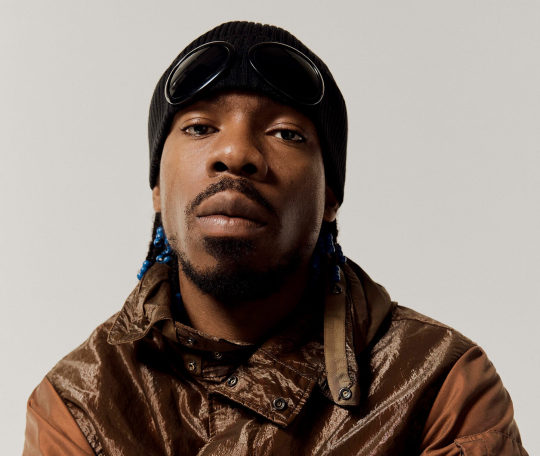
Aged 24, Gabriel Moses has an oscar worthy portfolio featuring the crème de la crème, having worked with Dior, Burberry, Adidas, Apple, Manchester United… He has built up a substantial client base over the years. Having started out as a self-taught photographer and videographer, his career took off at the age of 18 when he directed an ad for Nike, at 22 he became the youngest photographer to shoot the rapper Pa Salieu for the cover of Dazed magazine.

Much of his Nigerian cultural heritage is highlighted in his work in the form of family photographs, as are the women. Gabriel Moses pays homage to the women in his entourage who introduced him to the world of fashion and art.

Referring to Malian photographer Malick Sidibé as his inspiration, his work is characterized by textured effects and deep, dark tones, his models embody characters and his creations tell stories.
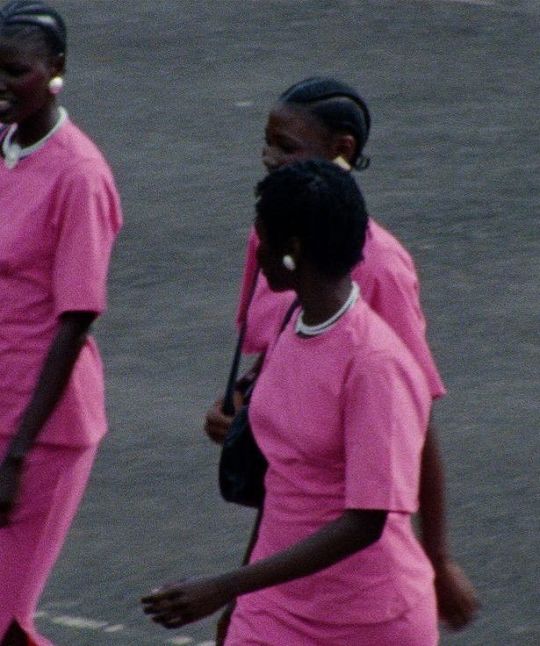
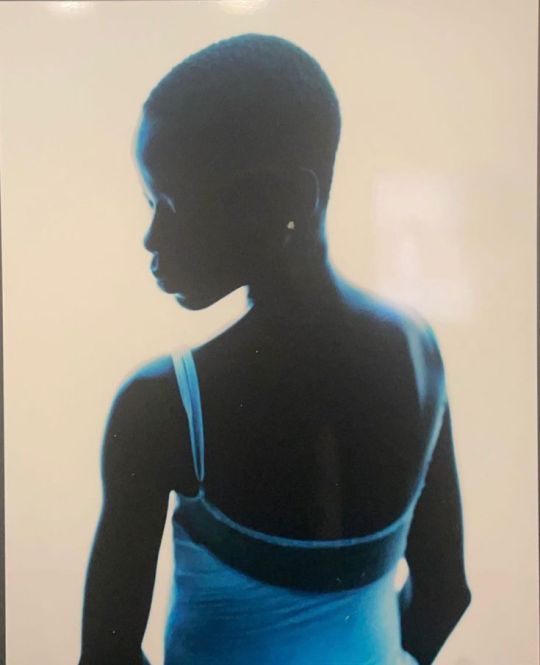
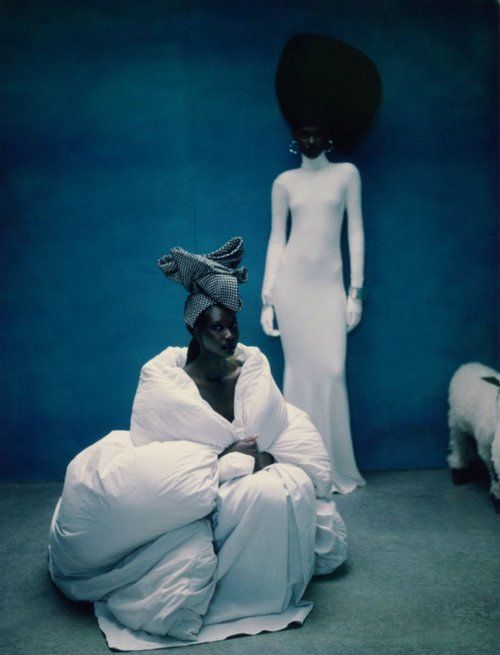
His first solo show, Regina 'A salute to women', took place last year at 180 Studios in London, and featured 50 of his creations, including shorts films.
youtube
Campbell Addy
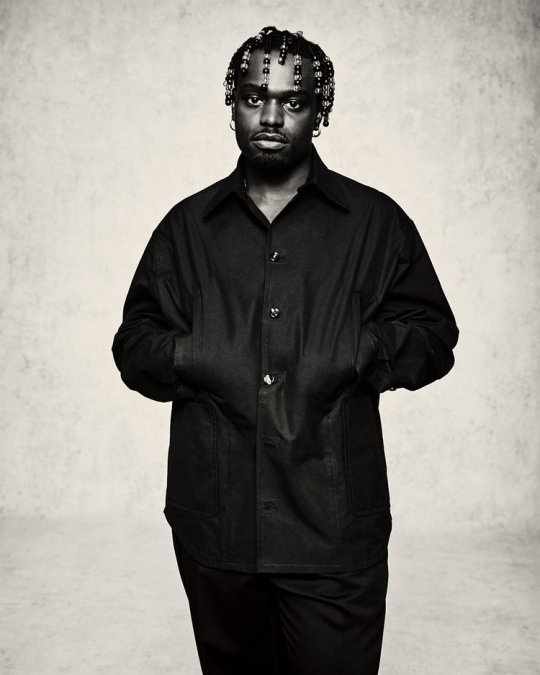
Campbell Addy is a British-Ghanaian artist and photographer based in London. He draws inspiration from his culturally diverse upbringing, his work embraces distinctive narratives and genuine emotions, emphasizing unique casting choices that showcase underrepresented faces.
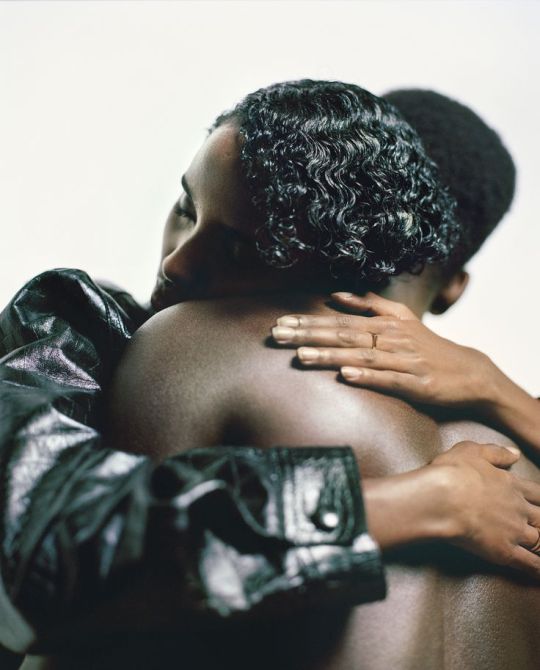
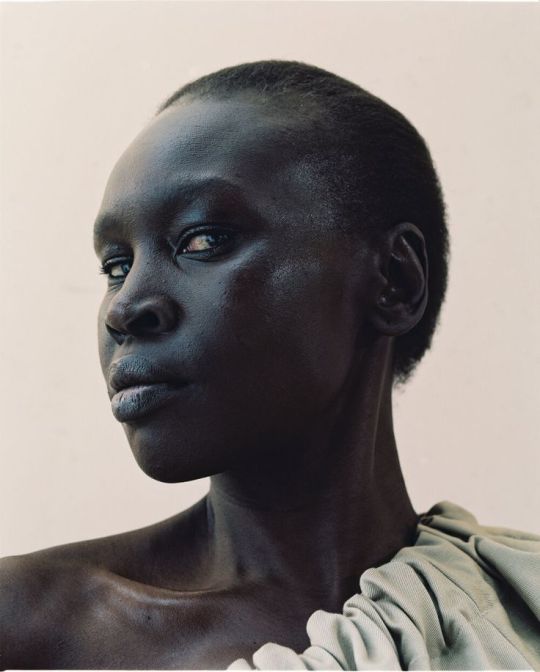

Addy established Nii Journal, a platform that embodies the representation he envisioned in shoots with friends and peers. Additionally, he founded Nii Agency, where he recruited diverse faces for casting and modeling, crafted to question conventional notions of beauty, it presented an alternative viewpoint on the definition of beauty and style within our contemporary fashion industry.
Since then the 29-years-old creative has worked for leading titles with artists as models such as Tyler The creator, FKA Twigs, Bukayo Saka, Beyonce ... and was chosen by Edward Enninful to capture his Time magazine cover.


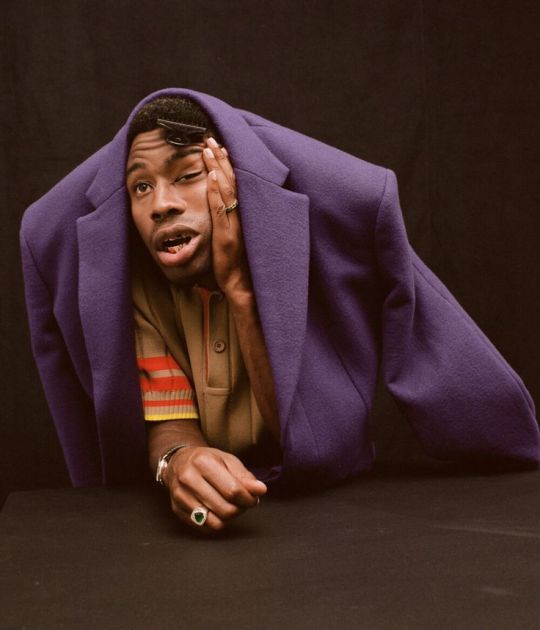
3 notes
·
View notes
Text

Unlocking Ghana's Cultural Tapestry: A Journey Beyond Accra.
When travelers think of Ghana, the bustling capital city of Accra often takes center stage. While Accra offers a glimpse into the nation's vibrant energy and diversity, the true essence of Ghanaian culture lies in the distinct regional identities that exist beyond the city limits. To unlock a deeper understanding of this West African gem, it's essential to venture out and immerse yourself in the captivating cultural landscapes that make Ghana so remarkable.
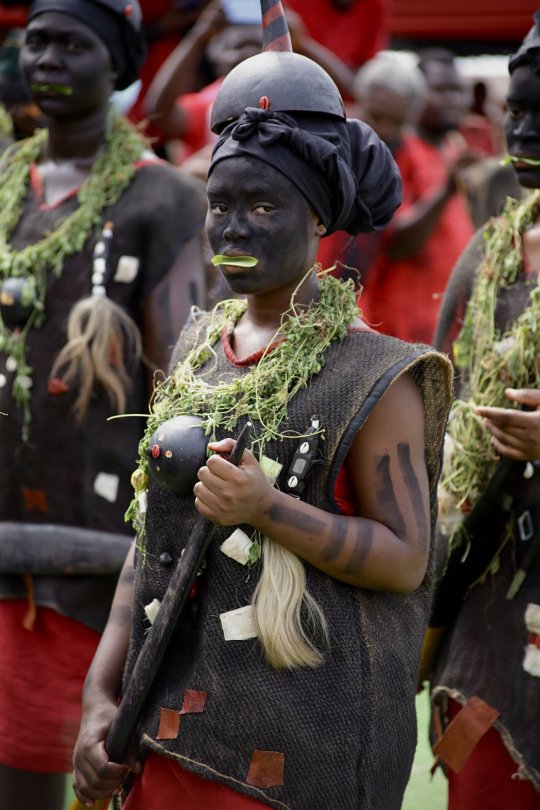
Start your cultural odyssey in the Ashanti Region, the heartland of the prestigious Ashanti Kingdom. At the center of this cultural epicenter lies Kumasi, a city that pulses with history and tradition. Wander the halls of the magnificent Manhyia Palace, the seat of the Asantehene, the revered Ashanti monarch, and witness the grandeur of the Akwasidae Festival. This spectacular celebration honors the Ashanti's royal ancestors through mesmerizing dances, rhythmic drumming, and the intricate display of ornate kente cloth. Dive into the region's rich artisanal legacy by exploring the workshops of skilled kente weavers and gold jewelry makers, whose craftsmanship has been honed over generations.

Venture north to the captivating Northern Region, where the Dagomba, Gonja and other tribes have preserved their distinct cultural identity. In the bustling city of Tamale, marvel at the Sahelian-style architecture, with its mud-brick structures and striking silhouettes. Attend a traditional funeral ceremony or the vibrant Damba Festival, which commemorates the birth of the Prophet Muhammad through a dazzling display of music, dance, and religious rituals. Seek out the ancient mud-brick mosques, such as the Larabanga Mosque, one of the oldest in West Africa, and immerse yourself in the region's deep Islamic heritage.

Shifting your focus eastward, the Volta Region offers a glimpse into the unique Ewe culture. In towns like Ho and Keta, witness the mesmerizing traditional dances and learn about the Ewe's captivating language and culinary traditions. Explore the picturesque landscapes of the region, from the cascading Wli Waterfalls to the serene Kalakpa Resource Reserve, where you can connect with the rhythms of nature and the local communities.
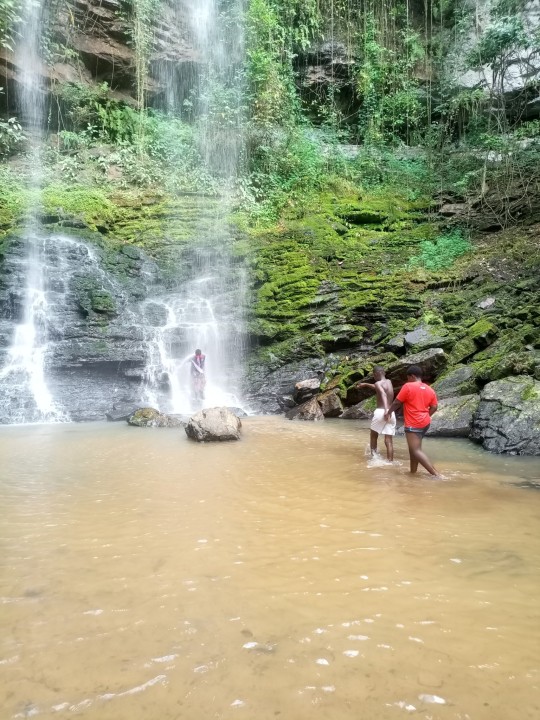
Staying within the Greater Accra Region, venture to the fishing villages of Jamestown and Chorkor to experience the vibrant Ga culture. Observe the daily lives of the Ga people, their colorful architectural style, and their rich cultural celebrations, such as the Homowo Festival, which commemorates the victory over famine. Engage with the local artisans and learn about their time-honored crafts, from pottery to basket weaving.

Finally, make your way to the Central Region to immerse yourself in the Fante culture. Explore the historic towns of Cape Coast and Elmina, where the remnants of colonial-era forts and castles stand as silent witnesses to the region's complex past. Observe the traditional fishing practices and vibrant local markets, and attend the Oguaa Fetu Afahye, a captivating Fante cultural festival featuring music, dance, and mouthwatering cuisine.

By venturing beyond the confines of Accra, you'll unlock a deeper understanding of Ghana's diversity and the unique regional identities that make this country so captivating. Each region offers a distinct cultural experience, from the regal Ashanti heritage to the centuries-old Islamic influence in the north, the mesmerizing Ewe traditions in the east, the vibrant Ga community in the capital, and the maritime Fante culture in the center. Embrace the opportunity to connect with the local people, learn about their customs and beliefs, and leave with a newfound appreciation for the richness and complexity of Ghanaian culture.
So pack your bags, open your heart, and embark on a cultural odyssey that will leave you forever transformed by the diversity and beauty of Ghana, beyond the boundaries of its capital city. Unlock the true essence of this remarkable nation by venturing out and immersing yourself in the captivating regional identities that make Ghana a cultural tapestry worth exploring.
#bestghanatours#tourism#travel#ghana#tour package#accra ghana#tourist#travelwithus#worldwide privacy tour#summer#private#private tour#city tour#accra#voltaregion#northern lights#safari#nature#wildlife#adventure#marketing#sale#black tumblr#blacktravel#travelgram
4 notes
·
View notes
Text







Tapping into his Ghanaian heritage, IG - owu3.0 uses fashion to inspire others to find their identity. “At the end of the day, people do love stories. They love people who embrace self. And I think that, for instance, is one of my missions: To just teach self, teach knowledge of self. And I think that’s the most important part of a being, is if you know knowledge of self, then you know where you’re going in life and you know who you are, how to act, you know how to present yourself, how to speak to people, how to act.” -- Owusu-Koramoah
9 notes
·
View notes